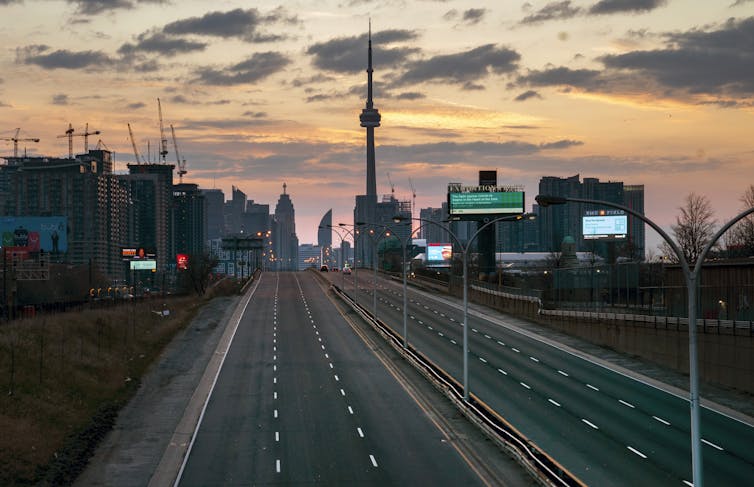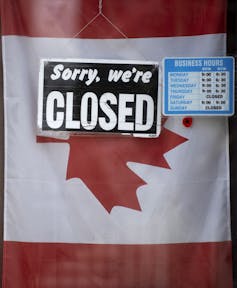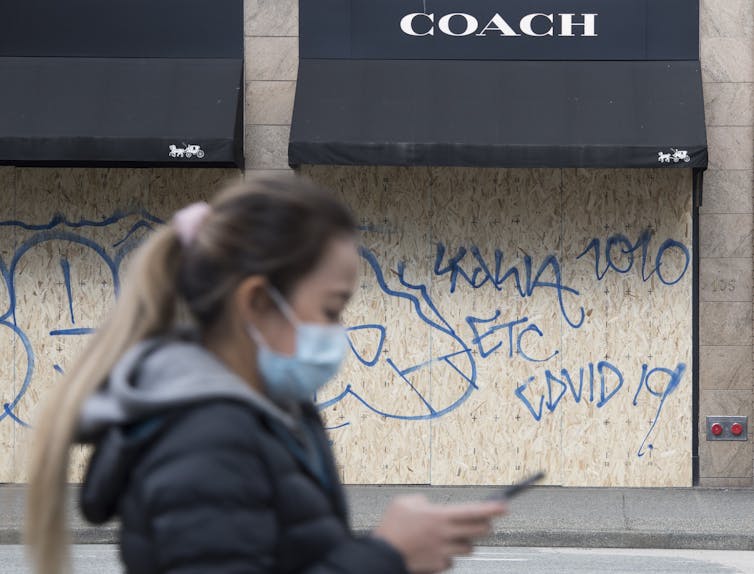
Catharine Chambers, University of Toronto
COVID-19 was declared a pandemic by the World Health Organization on March 11, 2020. Since then, many regions around the world — including all Canadian provinces and territories — have declared states of emergency and implemented strict public health measures, effectively putting cities under lockdown.
Canadians for the most part have adapted to this “new normal.” But as many of us are now well into our second month of social distancing, fatigue is setting in. People are grappling with unemployment or reduced work hours and the economy is suffering its worst downturn in decades. It’s not surprising that many people might be asking: When will this end?
There is no easy answer to this question. Despite mathematical projections and expert opinions, the reality is: we don’t know.
Surveillance signals
Global COVID-19 cases now top two million.
But there are promising signs that the public health actions we’ve taken are working. Although cases are still increasing in Canada, they are doing so at a slower rate than two to three weeks ago. Our hospitals and intensive care units are not overwhelmed, as they were in areas such as Italy or New York where interventions weren’t implemented soon enough.

But it’s too early to tell if we’ve reached the peak of the first epidemic wave.
That’s because the surveillance trends we’re seeing today actually represent a snapshot of the pandemic from about two weeks ago. It can take five days on average for someone infected with COVID-19 to develop symptoms, and even longer for someone who is symptomatic to seek health care, get tested and be reported to public health authorities.
On top of that, due to limited testing, reported cases are only the tip of the iceberg of infections in the community.
We will likely need to see a sustained reduction in the number of new daily cases over multiple weeks and consistent trends across multiple data sources before social distancing measures can start to be lifted.
Necessary conditions
But a decrease in the number of new cases will not be enough. Certain conditions will also need to be in place before our public health interventions can start to be relaxed.
According to the World Health Organization, it will depend on a number of factors, including whether the spread of COVID-19 is controlled through population-wide measures like social distancing and whether our health-care systems have the capacity to detect, test and isolate cases and trace their contacts.

It will require additional measures in place to prevent outbreaks in high-risk settings like long-term care homes where nearly half of all COVID-19 deaths in Canada have taken place. And it will require preventive measures to be set up in essential settings like workplaces and schools along with ongoing efforts to manage risks from imported cases.
Most importantly, it will require community education, engagement and empowerment. It will require striking the right balance between our collective responsibility to prevent the spread of COVID-19 in our communities and an individual’s willingness to engage in social distancing over the long term.
Public health decision-making
This is an evolving situation.
Public health officials are making decisions using the best available evidence about this novel virus and adjusting their strategies as new evidence becomes available.

Decisions about when to start reopening society are multifaceted. They should prioritize the health of Canadians while at the same time minimizing the economic and societal impacts of these necessary public health measures.
These decisions should be clearly communicated to the public and based on scientific data, not political rhetoric.
Because of geographic variations in the timing of the pandemic, we can expect that different provinces or countries will reopen at different times — for example, in early hot spots like Spain and Iran where some restrictions are already being lifted, or as recently announced for some parts of the United States.
Another more likely scenario is that these public health interventions will be turned on and off over a prolonged period depending on our health-care system’s capacity to care for the sickest patients at each successive epidemic wave.
Serological tests — which check the blood for antibodies to SARS-CoV-2, the virus that causes COVID-19 — would give us some indication of how many people in the population remain susceptible, which could inform our public health response. Such tests were recently approved in the U.S. and should be available soon in Canada.

Importantly, while these public health interventions seem as though they came in overnight, there will be a more gradual return to a somewhat normal life. If these measures are eased too fast or too early, we could see a rebound of cases that would again risk overwhelming our health-care systems.
The way forward
So, when will the pandemic end?
We are seeing positive signs of “flattening the curve” for this initial wave in some Canadian provinces like B.C., where social distancing measures may start to be relaxed as early as mid-May. But as with prior influenza pandemics, we might also anticipate a second fall wave or seasonal circulation of COVID-19 since the majority of people are not yet immune.
Read more: When will we return to normal after coronavirus? The data will tell us
The true end to the pandemic will most likely not happen until a vaccine is developed — a scenario that is still at least 12 to 18 months away — or herd immunity is achieved.
Until then, it depends on our collective efforts to physically distance, combined with enhanced testing and contact tracing, to slow the spread. These efforts are difficult, but now is not the time to ease up or begin taking small social risks. Instead, we must listen to the public health experts and work together to reopen society.![]()
Catharine Chambers, PhD Candidate, Division of Epidemiology, Dalla Lana School of Public Health, University of Toronto
This article is republished from The Conversation under a Creative Commons license. Read the original article.



